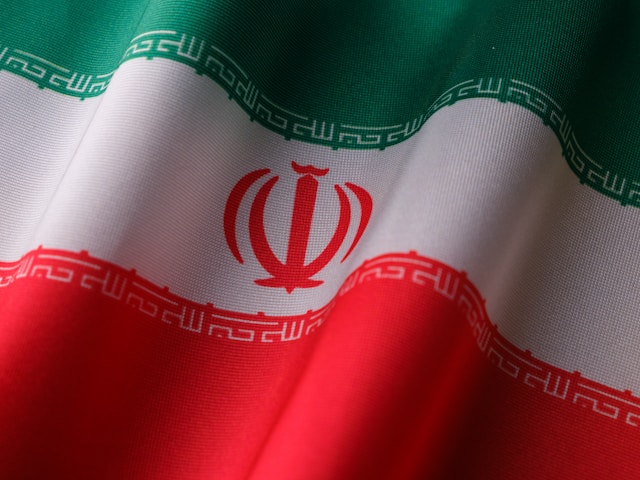Iran strengthens its intelligence capabilities by collaborating with Chinese satellite firms, raising security concerns in the Middle East
Iran has significantly advanced its surveillance technology through new partnerships with Chinese satellite companies, a move that has caught the attention of Western and Middle Eastern intelligence agencies. According to a report by The Washington Post on August 17, 2024, the collaboration focuses on enhancing Iran’s ability to conduct high-resolution surveillance of military targets in Israel and across the Middle East.
The Iranian government, particularly its Islamic Revolutionary Guard Corps (IRGC), is leading this initiative. The partnerships involve key Chinese firms specializing in remote-sensing satellite technology, which will substantially improve the quality of images Iran can capture. This collaboration is a direct result of a 25-year political and economic cooperation pact signed three years ago, which has facilitated deeper cooperation between Iran and China in various sectors, including military technology.
Embed from Getty ImagesOne of the Chinese companies involved, Chang Guang Satellite Technology Co., produces advanced “cubesat” satellites. These satellites are equipped with optical systems capable of capturing images with a resolution as fine as 30 centimeters. This represents a significant leap from the capabilities of Iran’s current Khayyam satellite, which provides images with a resolution of about 1 meter. The improved resolution will enable Iran to monitor U.S. and Israeli military installations with unprecedented clarity.
The implications of this technological enhancement are far-reaching. The upgraded surveillance capabilities could allow Iran to enhance its targeting accuracy for ballistic missiles and strengthen its early warning systems against potential attacks. Additionally, Iran could share this advanced intelligence with its regional allies, including the Houthi rebels in Yemen and various militias in Syria and Iraq. These groups have previously targeted U.S. military bases and commercial shipping in the Persian Gulf, raising concerns about the potential for more sophisticated and effective attacks in the future.
Historically, China has been a crucial partner for Iran in the military sector, despite international sanctions that have at times limited their collaboration. The renewed partnership under the 2021 agreement also includes commitments to joint military training and advancements in fixed-wing aircraft and helicopters. This deepening relationship reflects a broader trend of strategic alignment between Iran and China.
While the collaboration with Chinese firms significantly boosts Iran’s surveillance capabilities, it also presents challenges for international relations. Beijing has traditionally been cautious about providing direct military aid that could escalate tensions in the Middle East. China’s strategic interests in the region, particularly its economic ties with Saudi Arabia and the UAE, necessitate a careful balancing act to avoid provoking international sanctions or destabilizing the region further.
As Iran expands its surveillance capabilities through these international partnerships, the geopolitical dynamics in the Middle East are likely to shift. The enhanced ability to monitor and potentially target adversaries could increase regional tensions and influence the balance of power in the area.
Analysis:
Political: Iran’s enhanced surveillance capabilities could have significant political repercussions. The ability to monitor military installations with high precision may alter the strategic calculations of both U.S. and Israeli military planners. This development could prompt changes in defence postures or diplomatic strategies, as both nations may need to reassess their approach to regional security. Furthermore, the collaboration underscores the growing alignment between Iran and China, which could influence geopolitical alignments and power dynamics in the Middle East.
Social: The expansion of Iran’s surveillance capabilities highlights broader concerns about privacy and security in the region. As Iran gains advanced monitoring tools, there is a potential for increased surveillance of civilian areas, which could impact everyday life and personal freedoms. The technological leap could also influence public perceptions of security and privacy, potentially leading to societal debates about the balance between national security and individual rights.
Racial: The event does not directly relate to racial issues but could indirectly impact racial dynamics within the region. For instance, enhanced surveillance could lead to increased scrutiny and monitoring of ethnic and minority groups, influencing social dynamics and potentially exacerbating existing tensions.
Gender: The technological advancements in surveillance do not have a direct impact on gender issues. However, the broader implications of increased surveillance could affect societal structures and norms, including those related to gender. For example, greater monitoring could impact women’s rights and safety if it leads to increased state control and reduced privacy.
Economic: The collaboration between Iran and Chinese satellite firms reflects the intersection of technology and international relations, with potential implications for regional economic stability. Improved surveillance capabilities could impact economic activities, particularly if they lead to increased conflict or instability in the region. Additionally, the partnership highlights the economic dimensions of technological cooperation, as countries leverage advancements to bolster their strategic interests.
